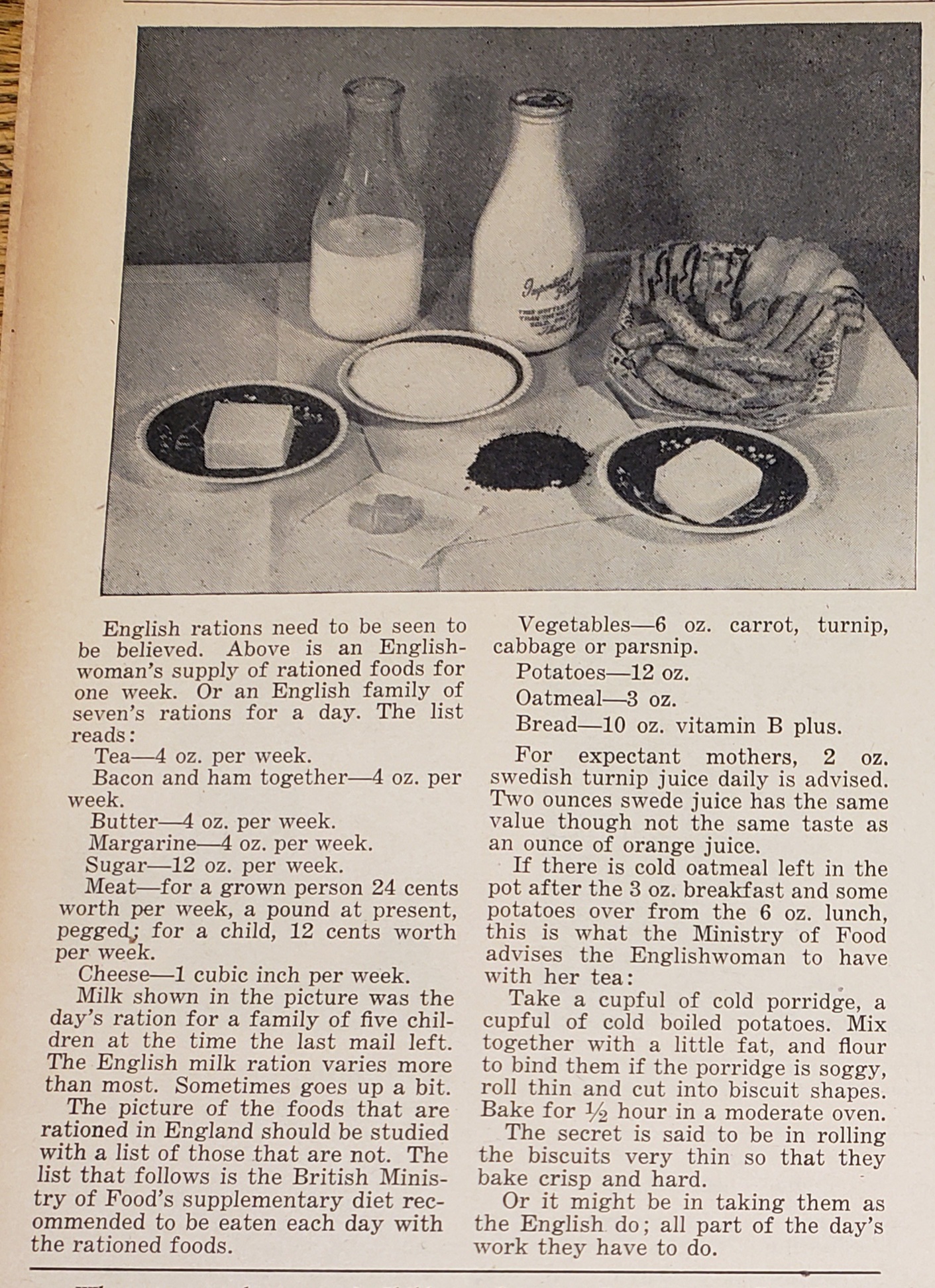As with all countries throughout the war, Canada was affected by food supply shortages during the war, though nowhere near the extent to, say, the United Kingdom.
Rationing, for Canadians, actually provided a "feeling of equality" because all ration books were alike, and it brought the sense of a common struggle with one another, as well as others in the Commonwealth going through the same thing. (1) The most sympathies were for Britain though, who were widely agreed to suffer from the worst rationing practices. (2)
Recipe sections in newspapers typically "belonged" in the women's section of newspapers, widely considered "fluff" or "soft news" and not worth considering in the study of journalistic history. This perception continued for some time after the war, although recent scholarship has begun to turn this around. (3) The truth is, that while women's pages have long held this perception, they have also been vital places for the forging of womanhood - they allowed women a place to communicate their thoughts, feelings, and share tips for the home with other women. They encouraged communication and interactivity with the newspaper itself, e.g. sending in recipes or advice column submissions. Advertisers realized that through the women's page, a new market for advertising had opened up to them. (4)
Food and rationing played a particularly important role in women's pages, and newspapers throughout the 1940s. Rationing changed what was available to home cooks; now with limits on their ingredients, newspaper recipes were vital to giving advice on what could be made with such limited ingredients. (3) Additionally, conservative women fought against "the entering of the state into the kitchen" during this time, while other women who supported food rationing also used it as a means to rally for their rights as consumers to fair prices and equitable distribution, as supported by their rationing books. Food was not just a way of survival, it was a way for women to influence politics and assert their rights. (1)

Bibliography
(1) Mosby, Ian. Food Will Win the War. Vancouver: Kent State University Press, 2014. https://books.scholarsportal.info/uri/ebooks/ebooks3/upress/2014-06-27/1/9780774827638.
(2) Hathaway, Sheri. “Canadians Living with Rationing in Wartime.” The Western Producer (blog), November 10, 2021. https://www.producer.com/farmliving/canadians-living-with-rationing-in-wartime/.
(3) Voss, Kimberly Wilmot. Re-Evaluating Women’s Page Journalism in the Post-World War II Era: Celebrating Soft News. Cham: Springer International Publishing, 2018. https://doi.org/10.1007/978-3-319-96214-6.
(4) Golia, Julie A. “Courting Women, Courting Advertisers: The Woman’s Page and the Transformation of the American Newspaper, 1895–1935.” The Journal of American History 103, no. 3 (2016): 606–28.